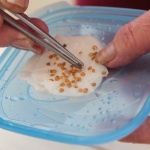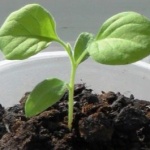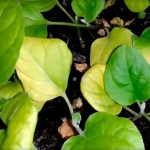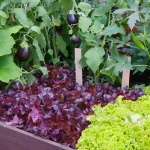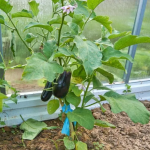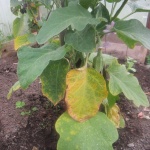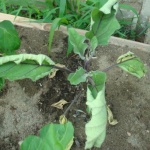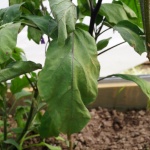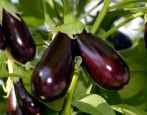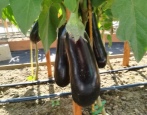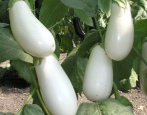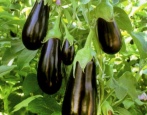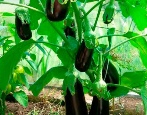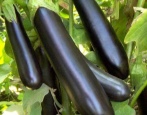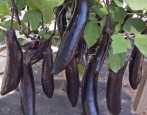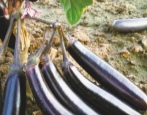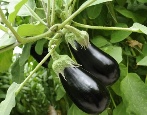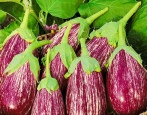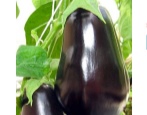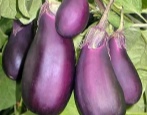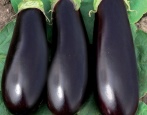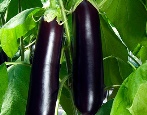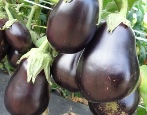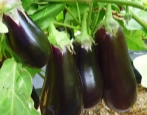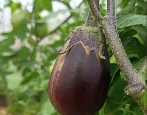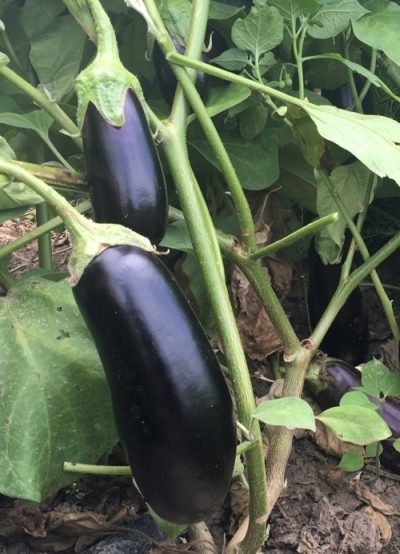
- Authors: Alekseev Yu.B., Avdeev Yu.I.
- Year of approval: 2000
- Growth type: medium-sized
- Bush height, cm: 70
- Fruit shape: cylindrical
- Fruit weight, g: 100-190
- Yield: high yielding
- Fruit color: dark purple
- Transportability: high
- Marketability: high
Alekseevsky eggplant is an early universal variety that shows high yields both when grown in open ground and under shelters made of polyethylene and polycarbonate. Due to its excellent taste characteristics, as well as unpretentiousness in growing and transportation, the crop is in demand both on private household plots and on farm lands. The juicy and dense structure of the vegetable shows itself well in the preparation of various culinary masterpieces, both for daily use and for preparing winter preparations and freezing.
Description of the variety
Eggplant Alekseevsky is the result of painstaking work of agricultural engineers Alekseev Yu. B. and Avdeev Yu. I. The year of the end of breeding work is considered to be 2000, after which the variety was officially registered and entered the wholesale and retail sale. The bred plant quickly gained popularity not only throughout Russia, but also in agricultural areas of various countries of the world due to its unpretentiousness, early ripening period and universal purpose.
Advantages:
- the formation of a large number of fruits;
- universal purpose;
- high taste indicators;
- rich color of the leathery cover;
- the correct shape of the fruit;
- undemanding care;
- high rate of keeping quality and transportability;
- the possibility of growing in regions with different climatic conditions;
- resistance to temperature fluctuations.
Disadvantages:
- thermophilicity;
- growing in open areas by seedling method.
Characteristics of the appearance of plants and fruits
Variety Alekseevsky is an early-maturing medium-sized crop, with a central stem height of no more than 70 cm. The semi-spreading plant has a slight omission and a complete absence of coloring glycosides. The rich green leaf plates have a grooved structure. A distinctive feature is the almost complete absence of thorny points on the fruiting calyx.
The cone-shaped fruits are colored deep purple with a glossy sheen. The size of a ripe vegetable ranges from 15 to 18 cm, and its diameter can be from 4 cm to 6 cm. Depending on the degree of maturity, the weight of an eggplant can range from 100 to 190 grams. Harvesting must be carried out at the stage of mass gain within 200 grams. Overripe vegetables significantly lose not only their color saturation, but also taste and aesthetic indicators. The color of the pulp is muted white.
Purpose and taste
The Alekseevsky variety has been one of the most demanded crops for many years. The harvested crop has a universal purpose, excellent taste and absolute absence of bitter notes. These properties make it possible to use eggplants both for preparing hot salads and stews, and for preservation in various variations. Despite the heat treatment and long storage period, vegetables retain their structure, taste and vitamin composition.
Ripening terms
Alekseevsky eggplant is an early variety, in which the technical ripeness of the fruit, depending on the region of growth, occurs within 95-100 days after the appearance of the first shoots. Harvesting after planting strong and healthy seedlings in open beds can be done after 50 days.
Yield
Despite the climatic conditions and the method of cultivation, the Alekseevsky variety always shows a high yield. From a plot of 1 m2, you can collect from 6 kg to 8 kg of juicy fruits.
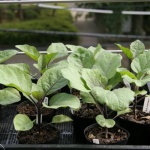
To get a tasty and bountiful eggplant crop, you must first grow strong and healthy seedlings. This culture is considered very capricious, therefore, you need to take care of seedlings when growing at home as correctly and carefully as possible.
Landing scheme
To obtain healthy plants and a high-quality harvest, vegetable breeders, when transplanting seedlings to a permanent place of growth, recommend observing the distance between branchy bushes. The standard planting pattern is 70 by 30 cm.
Growing and care
Despite the unpretentiousness of the early culture, experienced gardeners recommend following the basic agrotechnical rules when growing it. In most cases, the culture is grown in seedlings. Sowing prepared seed material for seedlings must be carried out in the last days of February. It is better to plant strong and healthy shoots on protected beds in the second decade of May, and for open areas, planting should be postponed until early June.
To obtain high-quality seedlings, farmers recommend using a mixture of turf, peat, humus, wood ash, sawdust and nitrogenous compounds as a soil. It is strictly forbidden to deepen the seeds more than 15 mm. The picking of young plants is carried out in the growth phase of 3-4 true leaves.
At the age of 50-60 days, the formed bushes can be transplanted. The area for growing crops should be fertile, well lit and protected from cold air currents. The planting hole must be shed abundantly before the plant is buried, and the root system should be placed on a small hill. The entire root zone should be immediately mulched.
Caring for an unpretentious culture consists of a classic set of activities:
- timely watering once every 10 days;
- loosening the soil as needed;
- weed removal;
- introduction of nutrient compounds;
- protection against pests.
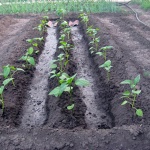
Planting eggplant is one of the most important stages in growing. When choosing a place for eggplants on your site, it is important to remember that this culture should be in warm soil, constantly illuminated by the sun. The plant is also very fond of spacious, open spaces, since its roots can grow over sufficient areas.
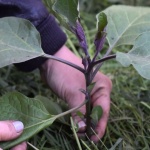
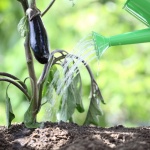
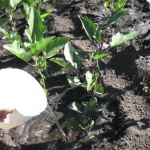
Disease and pest resistance
The unpretentious variety has a high immune response to the most common diseases.However, green spaces are often affected by the Colorado potato beetle. It is possible to prevent the death of plants from the pest both by carrying out regular treatments of the bushes, and by covering the beds with agrofibre.

Eggplant is one of the most demanding crops. For its successful cultivation, it is necessary to create optimal conditions, as well as to carry out prevention and fight against diseases and pests. Eggplant often infects both fungal and viral diseases. If treatment is not started on time, you can completely lose the crop.
